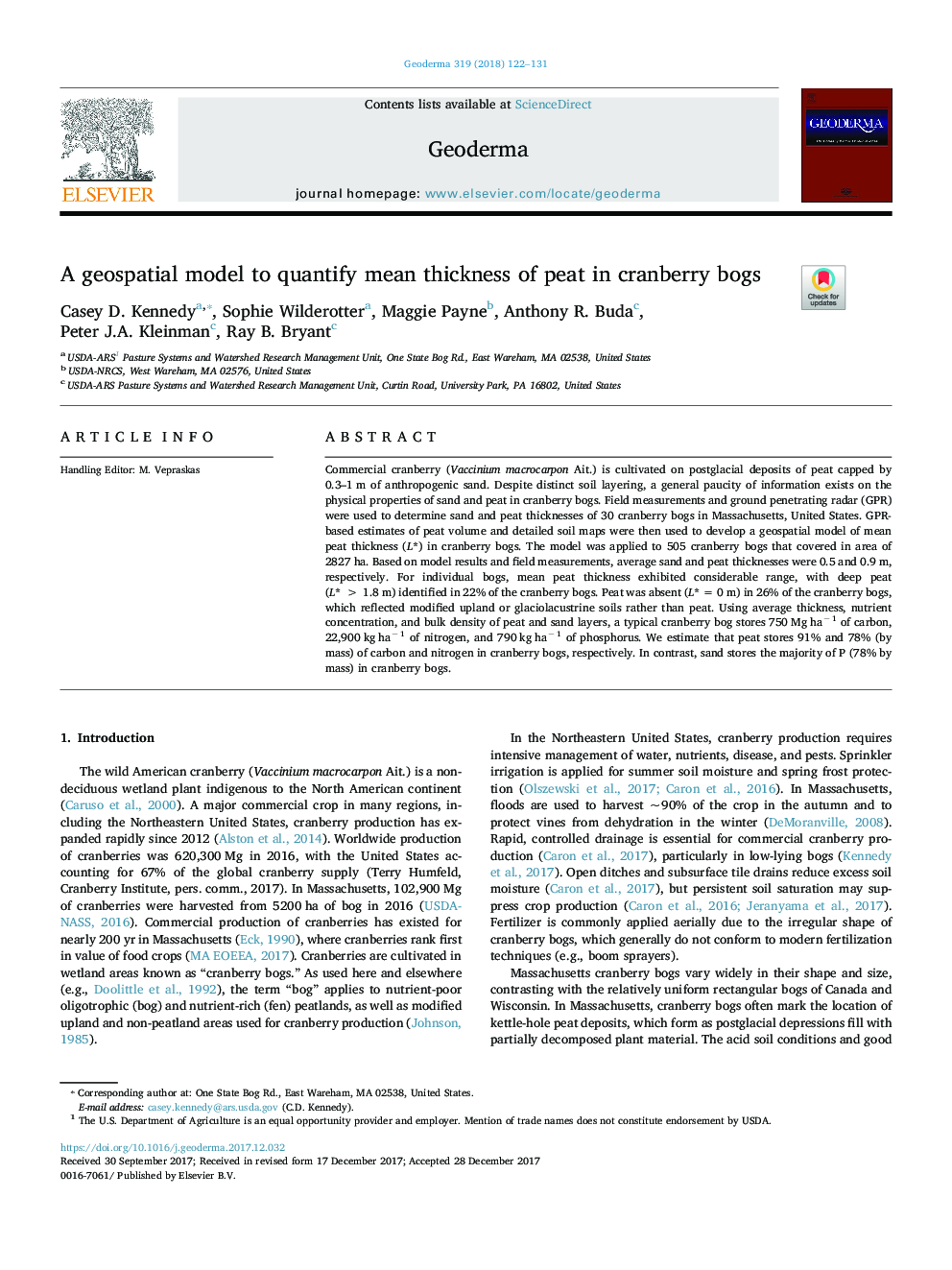| Article ID | Journal | Published Year | Pages | File Type |
|---|---|---|---|---|
| 8894156 | Geoderma | 2018 | 10 Pages |
Abstract
Commercial cranberry (Vaccinium macrocarpon Ait.) is cultivated on postglacial deposits of peat capped by 0.3-1 m of anthropogenic sand. Despite distinct soil layering, a general paucity of information exists on the physical properties of sand and peat in cranberry bogs. Field measurements and ground penetrating radar (GPR) were used to determine sand and peat thicknesses of 30 cranberry bogs in Massachusetts, United States. GPR-based estimates of peat volume and detailed soil maps were then used to develop a geospatial model of mean peat thickness (L*) in cranberry bogs. The model was applied to 505 cranberry bogs that covered in area of 2827 ha. Based on model results and field measurements, average sand and peat thicknesses were 0.5 and 0.9 m, respectively. For individual bogs, mean peat thickness exhibited considerable range, with deep peat (L* > 1.8 m) identified in 22% of the cranberry bogs. Peat was absent (L* = 0 m) in 26% of the cranberry bogs, which reflected modified upland or glaciolacustrine soils rather than peat. Using average thickness, nutrient concentration, and bulk density of peat and sand layers, a typical cranberry bog stores 750 Mg haâ 1 of carbon, 22,900 kg haâ 1 of nitrogen, and 790 kg haâ 1 of phosphorus. We estimate that peat stores 91% and 78% (by mass) of carbon and nitrogen in cranberry bogs, respectively. In contrast, sand stores the majority of P (78% by mass) in cranberry bogs.
Related Topics
Physical Sciences and Engineering
Earth and Planetary Sciences
Earth-Surface Processes
Authors
Casey D. Kennedy, Sophie Wilderotter, Maggie Payne, Anthony R. Buda, Peter J.A. Kleinman, Ray B. Bryant,
